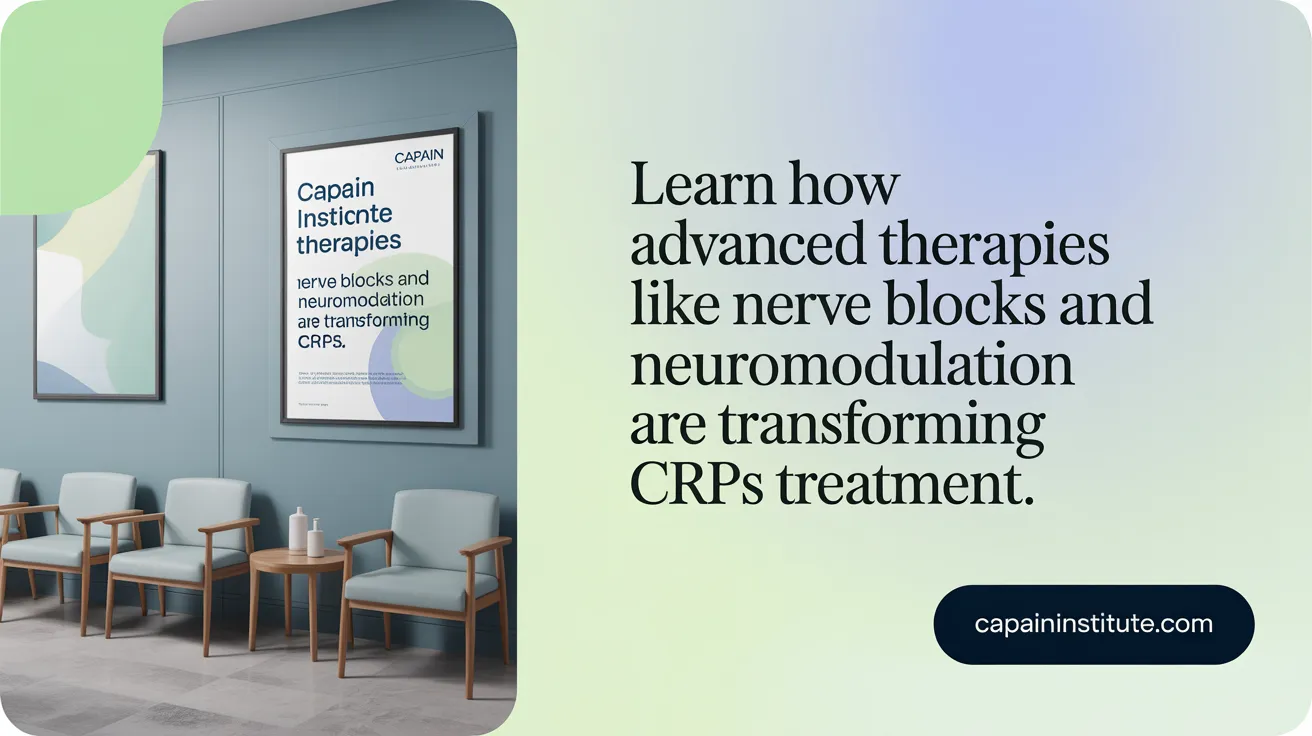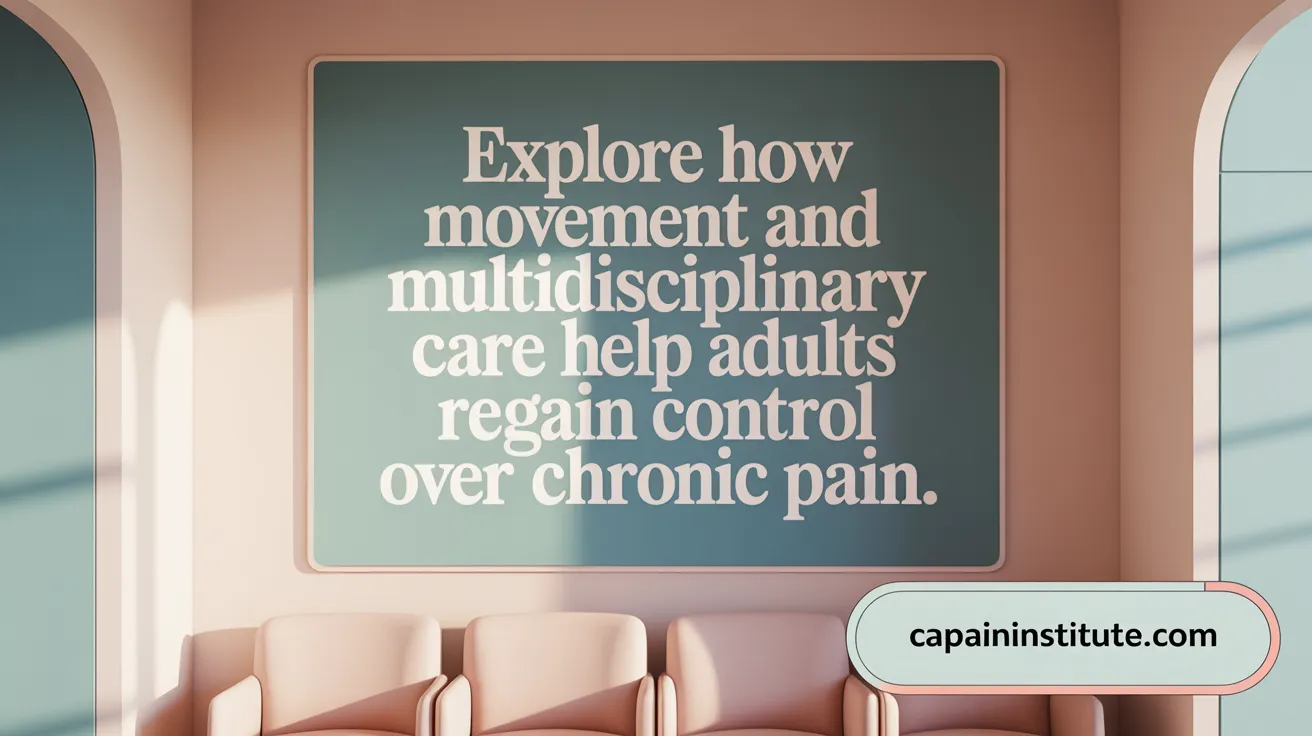Unveiling Strength Through Chronic Pain Stories
Chronic pain is a complex, often invisible battle affecting millions worldwide, yet numerous individuals have triumphed over it through resilience, innovative treatments, and holistic care. This article delves into the compelling narratives of patients who have faced chronic pain head-on and found paths to recovery, offering hope and insight for those navigating similar struggles.
Amelia's Holistic Road to Recovery: Managing Pediatric Chronic Pain Without Opioids

What are the personal experiences of young chronic pain patients and how are their conditions managed?
Amelia, a teenage girl, experienced severe amplified musculoskeletal pain syndrome (AMPS) following a sports injury. Her pain was moderate to severe, making it difficult to attend school or participate in daily activities, which also affected her mental health.
Her family sought specialized treatment at Rady Children's Hospital-San Diego, enrolling her in a comprehensive 28-day inpatient Chronic Pain Program. This program emphasizes a holistic approach that is entirely opioid- and medication-free, focusing on addressing not just the physical pain but also social and emotional well-being.
During her stay, Amelia engaged in various therapies tailored to her needs. These included aquatic pool therapy, which helped her improve mobility through gentle exercise in water. Creative therapies such as music and art allowed her to express herself and find joy in activities that fostered emotional healing. Storytelling, massage, acupuncture, and Healing Touch further supported her physical comfort and relaxation.
Psychotherapy, both individual and group, was integral in helping Amelia develop coping strategies, rebuild her confidence, and foster a hopeful outlook on her recovery. The multidisciplinary team—comprising pediatric physicians, nurses, therapists, psychiatrists, psychologists, teachers, and a patient navigator—worked collaboratively to create a personalized treatment plan.
Amelia described the program as enjoyable and noted that it contributed to her feeling happier and more hopeful about her future. Her journey illustrates how a multidisciplinary, holistic inpatient program can effectively help children manage chronic pain, regain function, and lead fulfilling lives without relying on opioids.
This approach highlights the importance of comprehensive care that respects the unique needs of pediatric patients, integrating physical therapies with emotional support to promote healing and resilience.
Complex Regional Pain Syndrome: Patient Triumphs Through Advanced Pain Management

Overview of CRPS and its challenges
Complex Regional Pain Syndrome (CRPS) is a rare but intensely painful chronic condition affecting about 1 in 300,000 people. It often develops after injuries such as surgery, fractures, or prolonged immobility. CRPS involves abnormal nerve growth, which leads to changes in pain sensation, swelling, warmth, and sensitivity in the affected limbs. Because of its complex nature, diagnosis can be delayed, causing prolonged suffering for patients. For a detailed overview, see Complex regional pain syndrome (CRPS) causes and symptoms.
Patient stories of diagnostic delays and treatments
Many CRPS patients initially face struggles with diagnosis. For instance, Arlene Margolis endured eight years of persistent knee pain following multiple surgeries before her condition was identified as CRPS. Once diagnosed, she received targeted therapies like nerve block injections, which greatly alleviated her pain. Joyce Williamson also battled CRPS after wrist surgery, experiencing pain levels of 8-9 out of 10. Her treatment with a spinal cord stimulator provided remarkable relief, bringing her pain down to 1-2 and restoring her ability to function normally. Read more about Arlene Margolis's pain journey and Joyce Williamson's spinal cord stimulation success.
Use of nerve blocks, injections, and neuromodulation
The management of CRPS often involves advanced techniques designed to modulate nerve activity. UAMS employs nerve pain medications and injections to block nerve signals. For severe cases, neuromodulation procedures such as spinal cord stimulation and dorsal root ganglion stimulation are used. These devices act like a pacemaker for nerves, disrupting pain signals and providing substantial relief. Learn more about CRPS treatment options at UAMS and Neuromodulation treatments.
Role of multidisciplinary teams in managing severe chronic pain
Effective CRPS treatment relies on a team of specialists, including pain physicians, neurologists, and physical therapists. This collaborative approach allows for personalized care — combining medication, injections, and neuromodulation tailored specifically for each patient’s needs. Explore Multimodal pain management strategies and Expert care for chronic pain patients.
Improvements in quality of life and functionality from advanced therapies
Patients like Joyce Williamson and Carye Beavers have experienced significant improvements after these therapies. Joyce can now enjoy daily activities and has resumed her hobbies, while Carye reports a reduction from severe pain to more manageable levels. Such outcomes highlight the importance of specialized, multimodal treatment options in managing severe chronic pain and restoring quality of life. See Impact of specialized pain treatment and Patient success stories with CRPS for more success stories.
For more information on successful CRPS treatments and neuromodulation therapies, search for Complex regional pain syndrome treatment success stories and neuromodulation therapies. This can provide additional insights into how advanced medical interventions are transforming patient outcomes.
Megan’s Movement: Empowerment and Multidisciplinary Care in Adult Chronic Pain Management

What role does interdisciplinary care and movement play in managing chronic pain in adults?
Megan H. exemplifies how complex, long-term pain conditions can profoundly impact daily life, emotional well-being, and overall independence. She struggles with multiple chronic issues—such as scoliosis, degenerative disc disease, herniated discs, spinal stenosis, sciatica, and radiculitis—that result in persistent and severe pain.
Initially, her journey through various medical specialists yielded limited relief. It was only when she discovered the Shirley Ryan AbilityLab’s Pain Management Center that she experienced a turning point. The program uses a comprehensive, interdisciplinary team approach involving medical doctors, psychologists, physical therapists, and occupational therapists.
Active participation is at the core of this approach. Patients like Megan engage in physical therapy, including nerve glides and targeted stretching exercises that mobilize nerves and restore function. Pelvic floor therapy addresses lower-back stiffness and associated pelvic pain, particularly linked to gastrointestinal issues like irritable bowel syndrome.
In addition, psychological support through relaxation and mindfulness techniques helps patients develop resilience and skills to cope with their pain. The program emphasizes pacing strategies and body awareness, enabling patients to manage flare-ups and reduce fear related to movement.
Megan’s story is a testament to how movement, when guided by expert multidisciplinary care, can serve as a catalyst for recovery. She regained sensation in her limbs, improved her strength and mobility, and learned to listen to her body. This empowerment enabled her to participate more fully in life, from family activities to personal hobbies.
The intervention highlights that, despite the chronic and sometimes disabling nature of adult pain conditions, active movement and psychological tools foster significant improvements. These practices not only reduce pain but also restore confidence, independence, and a sense of control.
More about multidisciplinary adult pain management programs
Searching for “Interdisciplinary chronic pain management programs emphasizing movement and psychological support” can provide further insights into advances in comprehensive care. These programs underscore the importance of combining physical activity, mental health, and individualized therapies to promote functional recovery in adults living with chronic pain. For detailed patient experiences and interdisciplinary approaches, see Megan's chronic pain journey at Shirley Ryan AbilityLab and UPMC Pain Management patient stories.
Peggy's Path: Personalized Medical Procedures Restoring Life Quality in Chronic Pain

How can minimally invasive procedures like radiofrequency ablation help chronic pain patients regain activity?
Chronic pain often results from injury, aging, or conditions like osteoporosis, making even simple activities difficult. For Peggy Guin, a retired nurse practitioner with severe osteoporosis, a car accident in 2017 caused a lower back fracture that led to persistent, intense pain.
Despite trying various conservative treatments—medications, acupuncture, massage, physical therapy, chiropractic care, and hot/cold therapy—her pain remained unmanageable. Recognizing the need for specialized intervention, she turned to UF Health Pain Medicine.
Peggy was diagnosed with facet joint pain in her lower back, a common source of chronic axial pain related to aging and trauma. To address this, she underwent a radiofrequency ablation (RFA) procedure. RFA is a minimally invasive outpatient treatment where tiny needles with electrodes are inserted near the nerves supplying the affected joints. These electrodes deliver heat that 'stuns' the nerves, temporarily blocking pain signals.
Peggy underwent the procedure twice, about a year apart. Each time, she experienced approximately 80% pain relief. This significant reduction allowed her to resume many of her previous activities, including daily walks, gardening, caring for her cats, and household chores.
The success of Peggy's treatment underscores the potential of personalized, evidence-based interventions. It also demonstrates the importance of a comprehensive care approach, combining precise diagnosis with targeted therapy.
Radiofrequency ablation offers a safe, effective option for patients who have exhausted conservative measures. It is reversible and repeatable, providing flexibility in chronic pain management.
This case exemplifies how individualized care plans, developed in partnership with healthcare providers, can restore activity levels and improve overall quality of life for chronic pain sufferers.
Real Patients, Real Triumphs: Overcoming Chronic Pain with Innovation and Compassion
Across the spectrum of chronic pain conditions, patient stories serve as inspiring testimonies to the resilience of individuals and the effectiveness of modern, comprehensive care. Multidisciplinary pain rehabilitation programs play a crucial role in these recovery journeys. For example, at UAMS, patients like Arlene Margolis experienced significant relief from complex regional pain syndrome (CRPS) through combined nerve blocks, medication, and advanced neuromodulation techniques such as spinal cord stimulation. Similarly, Cassandra H. at Shirley Ryan AbilityLab engaged in a holistic, team-based therapy involving physical, occupational, and psychological interventions, which ultimately enabled her to walk independently again.
Patient testimonials highlight that advanced therapies can dramatically improve quality of life. Tracie, a young patient with an inoperable brain tumor, overcame opioid dependency after participating in non-narcotic pain management programs that included nerve blocks, guided imagery, and psychological support at Johns Hopkins All Children's Hospital. These stories exemplify how tailored treatments—like nerve ablations, spinal stimulator implants, and physical therapy—offer hope and tangible improvements.
Addressing the emotional toll of chronic pain is equally vital. Many patients describe overcoming feelings of depression, helplessness, and social isolation through psychological support integrated into their treatment plans. These components bolster patient resilience, as seen in the journeys of individuals like Colleen Crownhart, who, after years of living with CRPS, regained her ability to work and pursue new career paths.
The motivational power of shared stories cannot be overstated. They reinforce that recovery is possible, especially when patients have access to innovative medical options and compassionate care. Their experiences emphasize the importance of specialized pain programs that combine cutting-edge procedures with emotional support, ultimately transforming lives.
For those seeking similar success, more information can be found through search queries like "Patient success stories in chronic pain rehabilitation and advanced treatments", which reveal continuous progress and hope in the evolving landscape of pain management.
Embracing Hope: The Human Spirit in Chronic Pain Recovery
The journeys of Amelia, Megan, Peggy, and many others testify to the extraordinary potential of multidisciplinary care, innovative therapies, and human resilience in overcoming chronic pain. These real stories illuminate the physical, emotional, and psychological facets of living with pain—and the pathways toward hope, empowerment, and renewed quality of life. By sharing and learning from these experiences, patients and caregivers alike gain invaluable motivation and insight, reinforcing that triumph over chronic pain is within reach through compassionate, comprehensive care.
